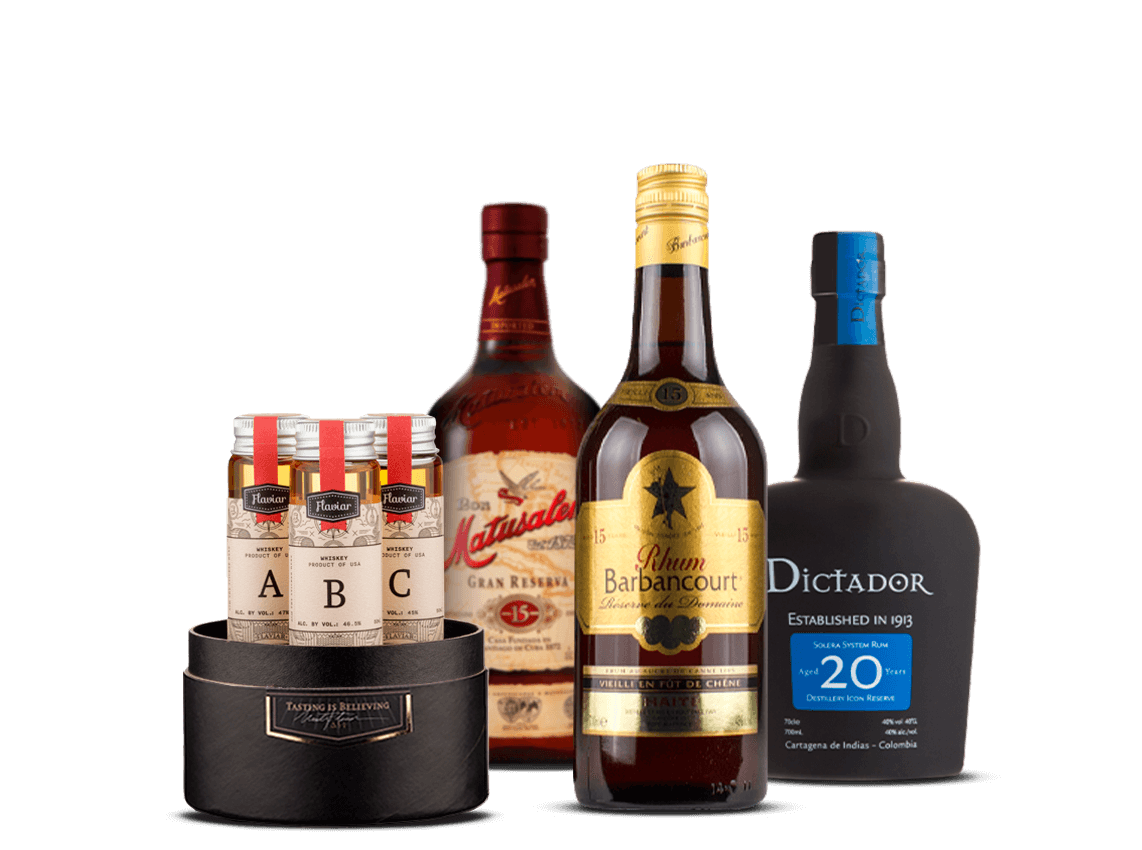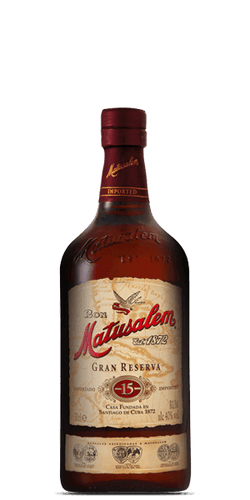

Here Be Pirates, Yo-ho!
 Only left •Last few at this price. Grab it now!
Only left •Last few at this price. Grab it now!
Flaviar Black Membership (£40/year) will be added, unlocking reduced prices on select products and other perks.
Flaviar Black Members have exclusive access to hundreds of specially priced bottles. Sure you don’t want it?
- CategoryRum
- Volume 3 x 45ml
Rum-ble in the Bundle - Thrilla with Vanilla.
Ahoy Sailors! Now we drink the stuff o' Pirates - RUM. Not the kind yer grandma spikes her tea with, na, this one we drink neat an' in spades, like in the good ol' pirate days.
Rum’s history is quite flimsy. Apparently the first distillation of Rum took place on the sugar plantations of the Caribbean in the 17th century, where plantation slaves figured out the great use of molasses. What a happy day.
Whatever the origins, Rum gained popularity fast. It spread to the American colonies and before the Revolutionary war began it was estimated every man, woman and child consumed an average of 14 liters of Rum each year. Nows that’s a lot of Yum, sorry, Rum. And more importantly, Rum even helped spur the American Revolution. How about that!
We’ve got a Thrilla with Vanilla for ya, a Rum-ble in the Bundle, all from different regions. Now be a good pirate and Rum with it. But carefully or you'll end up in Davy Jones' locker. Savvy matey? Arrrr, aye aye Cap'n.
And while yer at it sing this song with ye friends. Make cap'n Jack proud.
"Fifteen men on a dead man's chest, Yo-ho-ho and a bottle of Rum!
Drink and the devil be done with the rest, Yo-ho-ho and a bottle or Rum!"
Arrrr-ight! Put a pirate hat up, cut off that leg and bottoms up to Nelson's blood.
Smartass Corner:
1) Rum (usually) comes from molasses; the sweet and syrupy residue left behind after sugar crystals are extracted from sugar cane juice. Molasses is over 50% sugar, but it also contains significant amounts of minerals and other trace elements, which can contribute to the final flavor.
2) Common Rum classifications: White, Golden or Amber, Dark, Spiced, Añejo and Age-Dated Rums…
3) Due to the tropical climate common to Rum-producing areas, Rum matures at a much faster rate than is typical for Whisky or Cognac. An indication of this faster rate is the angels' share, or amount of product lost to evaporation. While products aged in France or Scotland see about 2-4% loss each year, Rum producers may see as much as 10%.
4) Solera method is an aging process, fractional blending, where the finished product is a mixture of ages, with the average age gradually increasing as the process continues over many years. Rum is periodically drawn from the lower casks which never move, and refreshed with an equal quantity of Rum from casks above.
5) A little bit of etymology; nobody really knows where the word Rum comes from. Most popular suggestions are: Rum (the Romani word for potent), Rumbullion (an uproar), Saccharum (sugar in Latin), Rummer (a Dutch drinking glass).
6) Rum is why we measure alcohol proof. To make sure Rum wasn’t watered down, it had to be ‘proven’ by soaking gunpowder with it. If it was ‘overproof’ (higher than 57.15 % vol.), then the gunpowder would ignite, if it wouldn’t, it was ‘underproof’.
7) Rum-running means smuggling liquor over water. In the sixteenth century, when excise taxes were standardised, the illegal transport and trade of Rum, known as Rum running came to life. During the American prohibition in the twenties this trade form reached its climax.
8) Rum used to be accepted as form of currency in Europe and Australia, a practice we should probably bring back into fashion.
This product is available in:
Note: Once an order has been safely & successfully delivered, we do not accept returns due to change of heart or taste. Due to state regulations, we cannot accept the return of alcohol purchased by a customer in error.
What’s in the box?































